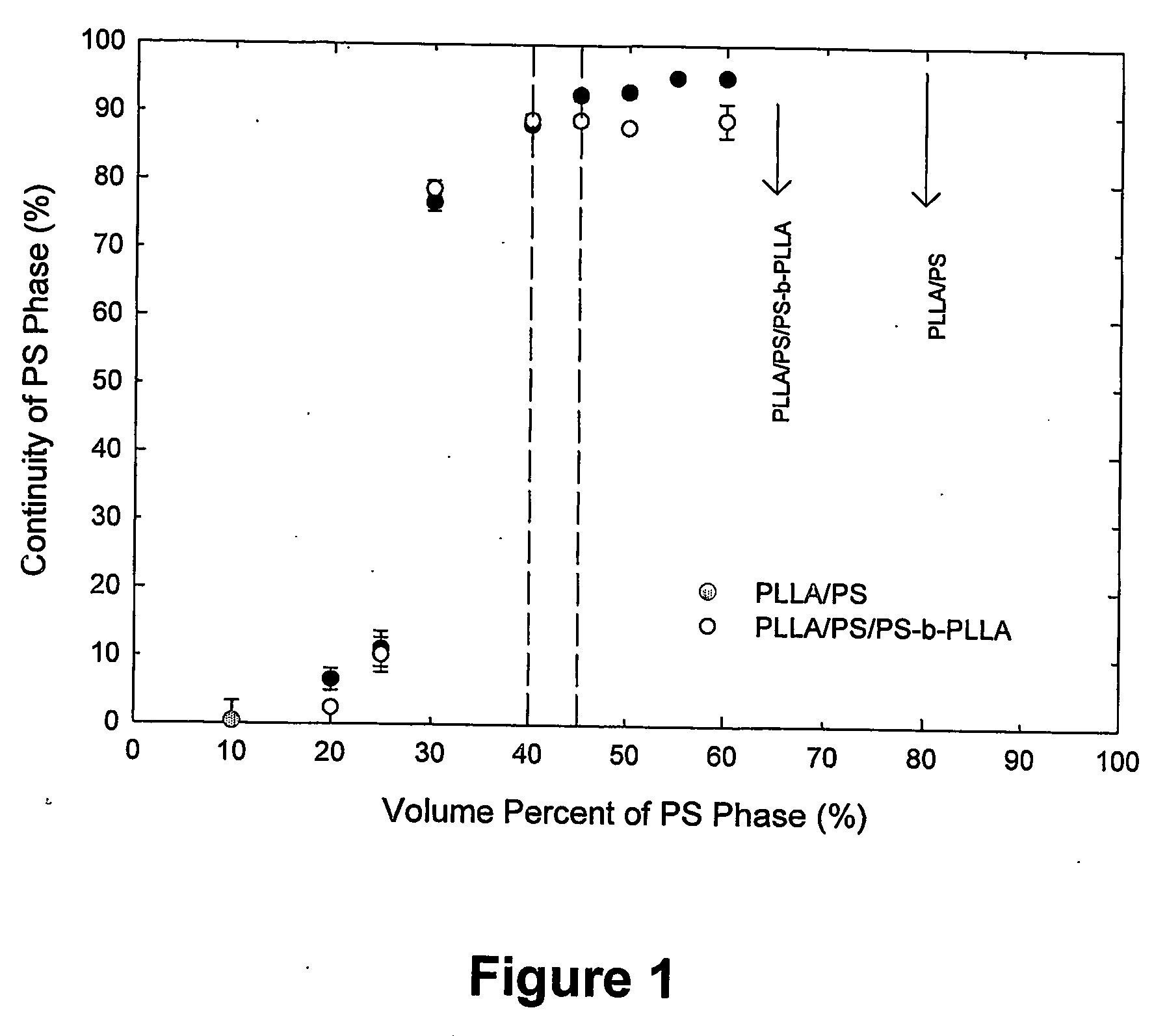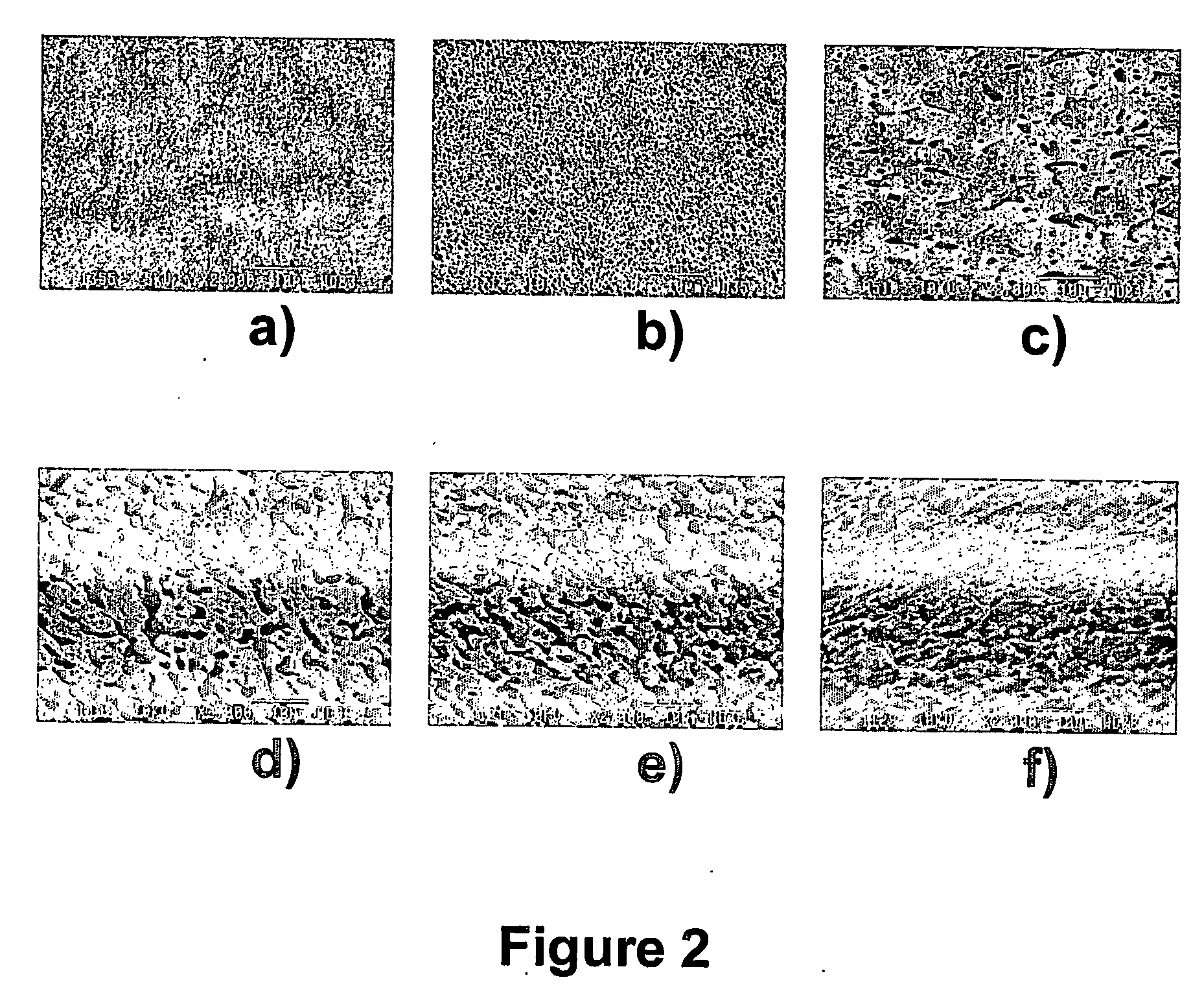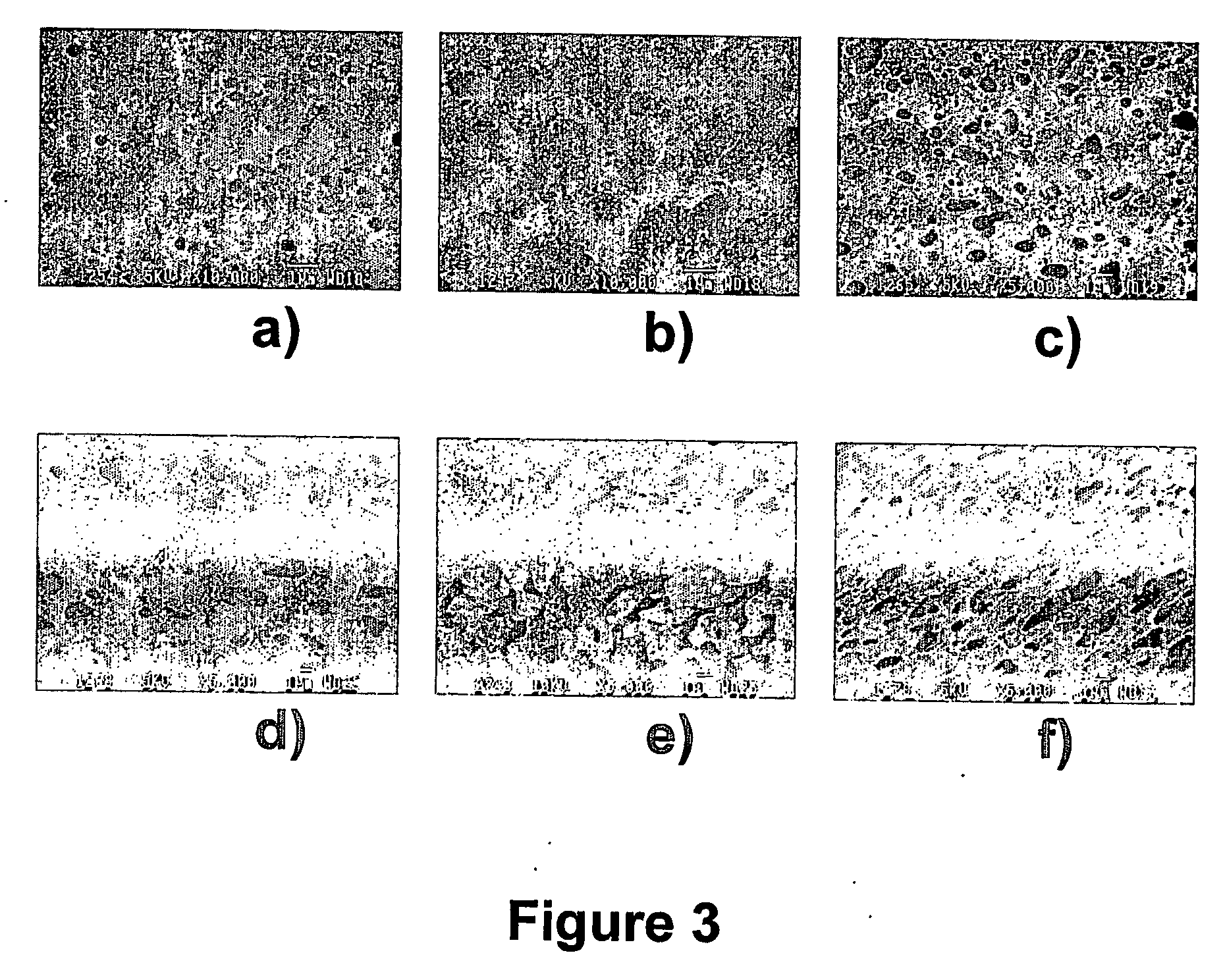Microporous articles comprising biodegradable medical polymers, method of preparation thereof and method of use thereof
a biodegradable, micro-porous material technology, applied in the field of micro-porous material comprising biodegradable medical polymers, can solve the problems of lack of uniform pore size or distribution control in the continuous void network, development of articles with dimensions and shapes limited by process, and no prior art document discloses precise control of the combined interconnection of pores, void volume and pore size distribution. , to achieve the effect of improving morphology
- Summary
- Abstract
- Description
- Claims
- Application Information
AI Technical Summary
Benefits of technology
Problems solved by technology
Method used
Image
Examples
example 1
Method of Preparing Microporous Poly(L-Lactide) (PLLA) Articles from Poly(L-Lactide) / Polystyrene (PLLA / PS) Compatibilized and Non-Compatibilized Blends
[0101] The compatibilizer used was a copolymer of PLLA and PS. Binary blends and compatibilized ternary blends were prepared by melt mixing the polymers and copolymer in a Brabender internal mixer with roller blades, under a constant high flow of dry nitrogen. Dry nitrogen is required to avoid a dramatic melt degradation of the PLLA. Prior to blending, PLLA and PS were dried for 48 hrs in a vacuum oven at 70° C. PLLA and PS were added simultaneously in the mixing chamber and the compatibilizer, when used, was introduced immediately after. The mixing blades were maintained at 50 rpm and the temperature was set at 200° C. All the blend concentrations are reported in the figures as volume fraction, except the compatibilizer concentration, which is presented as a weight-percentage value based on the polystyrene phase.
[0102] Cyclohexane ...
example 2
Continuity Development of the PS Phase in Non-Compatibilized and Compatibilized PLLA / PS Blends
[0103] Non-compatibilized and compatibilized PLLA / PS blends were used to prepare PLLA microporous articles as described in example 1. The continuity of the PS phase, that is to say of the void space after extraction, was calculated using the above-described gravimetric method, and the results are shown in FIG. 1.
[0104] For the binary PLLA / PS blends (white circles), the plateau indicating maximum continuity of the PS phase is achieved at about 45% PS. In this case, the porosity is between 43 to 75% and the number-average pore diameter is between 1.5 and 2.5 μm. It is interesting to note that the PLLA / PS blend maintains structural integrity up until 75-80%, at which concentration the extracted samples disintegrate. The SEM micrographs shown in FIG. 2 illustrate the porous microstructure at various concentrations of PS.
[0105]FIG. 1 also shows the effect of the PLLA / PS copolymer on PS contin...
example 3
Effect of the Compatibilization on the Pore Size and Pore Size Distribution
[0106] Non-compatibilized and compatibilized PLLA / PS blends were used to prepare PLLA microporous articles as described in example 1. Micrographs in FIG. 4 illustrate the use of increasing concentrations of diblock PLLA / PS copolymer on the resulting article pore size. A significant reduction is observed. In a PLLA / PS (50 / 50) blend, the number-average pore diameter can be decreased to 0.6-0.8 microns and the volume-average pore diameter is lower than 1 micron in the presence of a compatibilizer.
[0107]FIG. 5 shows the volume average pore diameter as a function of PS volume fraction for both compatibilized and non-compatibilized blends. The number average diameter results (not shown) show similar trends. PLLA / PS blends with a highly continuous PS phase from 40 to 70% PS clearly demonstrate a significant increase in pore diameter with volume fraction. This behaviour is typical for an immiscible binary blend sys...
PUM
| Property | Measurement | Unit |
|---|---|---|
| porosity | aaaaa | aaaaa |
| pore diameter | aaaaa | aaaaa |
| pore diameter | aaaaa | aaaaa |
Abstract
Description
Claims
Application Information
 Login to View More
Login to View More - R&D
- Intellectual Property
- Life Sciences
- Materials
- Tech Scout
- Unparalleled Data Quality
- Higher Quality Content
- 60% Fewer Hallucinations
Browse by: Latest US Patents, China's latest patents, Technical Efficacy Thesaurus, Application Domain, Technology Topic, Popular Technical Reports.
© 2025 PatSnap. All rights reserved.Legal|Privacy policy|Modern Slavery Act Transparency Statement|Sitemap|About US| Contact US: help@patsnap.com



